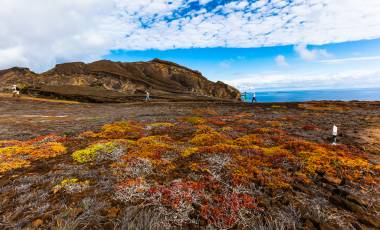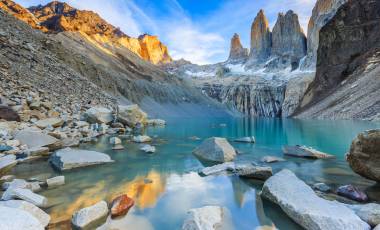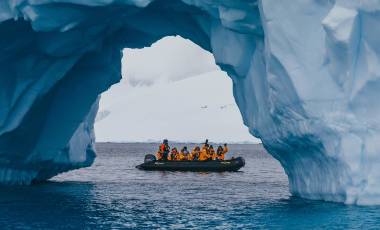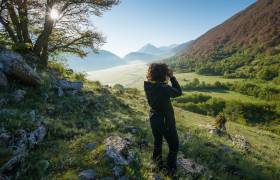Read time – 4 minutes
Though it’s true that all species of penguin live in the Southern Hemisphere, you may be surprised to learn that of the world’s 17 varieties, just six inhabit Antarctica.
Of these, only two (Adelie and Emperor) truly make the continent their home. So if you’re looking for where to find penguins, you may be surprised to learn that the others (Gentoo, Chinstrap, Macaroni and King) all reside around the Peninsula and sub-Antarctic islands.
As many penguin species spend much of their lives at sea, these flightless icons of the avian kingdom can only be seen in select locations during their breeding season. If you want to see them, you can use this guide to the world’s penguin hotspots – plus a couple of cold spots too!
Where can you find Penguins?
Boulders Beach, South Africa
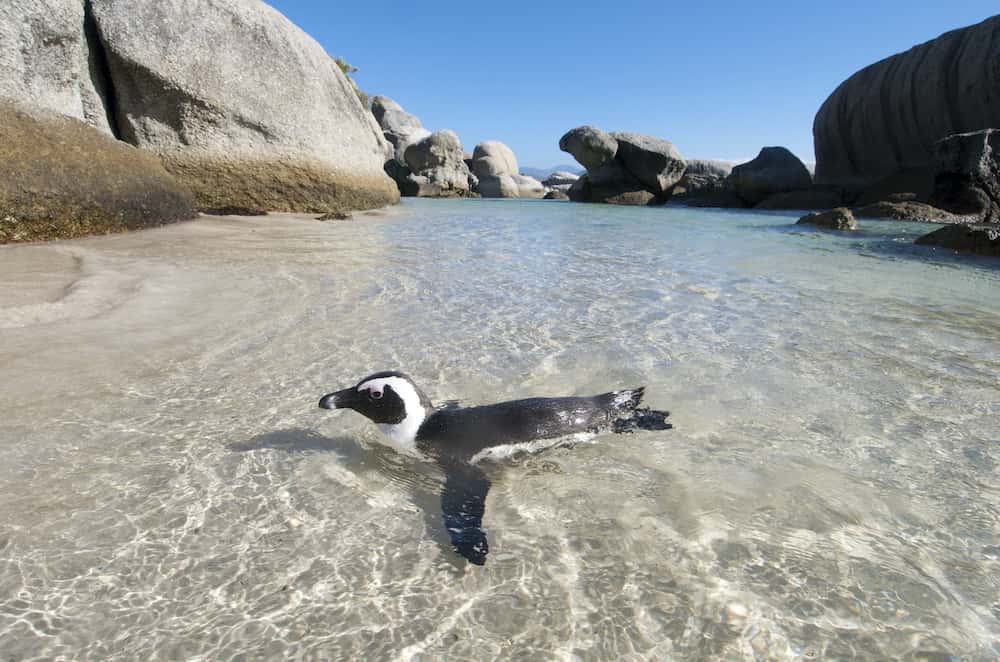 Jackass penguin
Jackass penguin There’s a special stretch of coastline, near where the cold currents of the Atlantic meet the warmer waters of the Indian Ocean, which is home to a boisterous group of monochrome birds, known as Jackass penguins.
Not far from central Cape Town, Boulders Beach has long been where these African penguins come to lay their eggs in sandpits between the characteristically smooth rock formations. Here, the scorching sun provides a perilous challenge as the beached birds risk death to protect their clutches from the relentless rays.
Take me there: Holidays to Cape Town
The Galapagos Islands
A unique archipelago cast off from South America millions of years ago, the Galapagos Islands are home to many species that have evolved separately from the rest of Earth’s animals.
Due to the geographical isolation, the wildlife here has no natural fear of human presence, so encounters can be intimate – especially with species as curious as the little Galapagos penguin which can be found on both Santiago and Bartolomé islands.
Take me there: Holidays to the Galapagos Islands
Patagonia (Argentina & Chile)
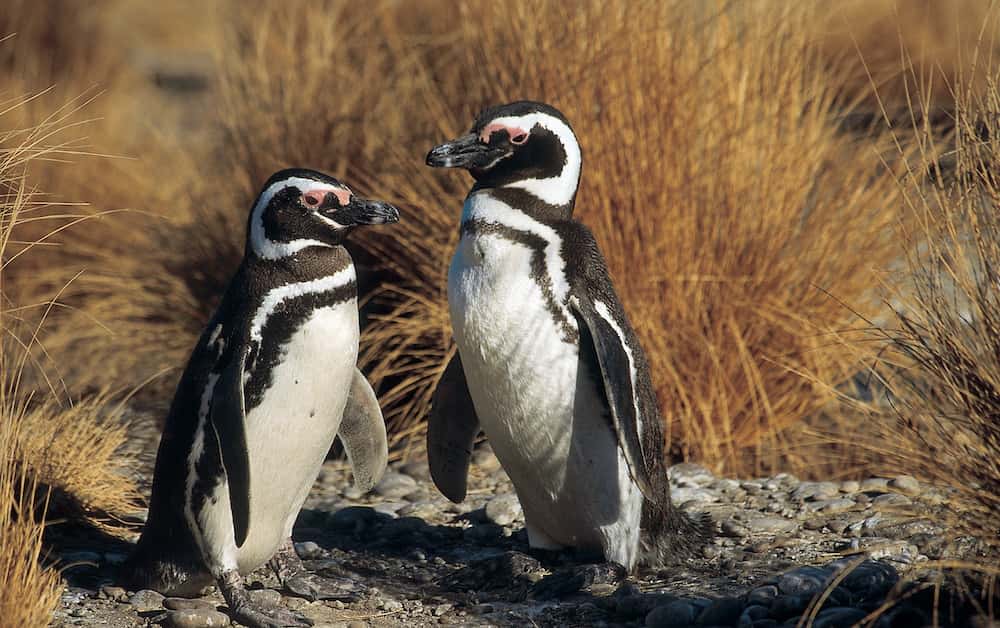 Magellanic penguins
Magellanic penguins At the southern tip of South America, around Chile and Argentina, Magellanic penguins can be found hugging the Patagonian coast where they come to breed. Closely related to the Galapagos and African penguins, Magellanics are recognisable by the two black bands that run above their chest and by the white border that runs around their black-capped heads.
They like to nest under bushes and in burrows and are one of the penguin species that mate for life – each year the male Magellanic reclaims his burrow and awaits the return of his female, who will recognise him just by his call.
Take me there: Holidays to Patagonia
New Zealand
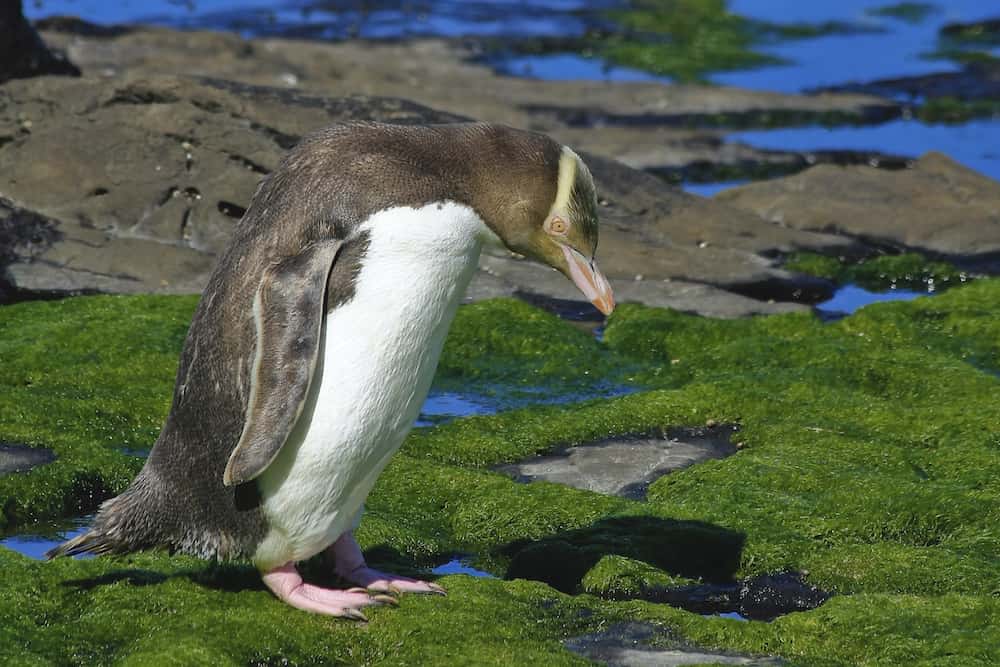 Yellow-eyed penguin
Yellow-eyed penguin Unbeknown to many, New Zealand harbours populations of six unique species of Penguin, both on its mainland beaches and remote island shores. Visitors to South Island could see the rare and endemic Yellow-eyed penguin, as well as Fjordland penguins which reside along the island’s western fjords.
The Blue penguin also lives in these parts but is rarely seen due to its size (at just 25cm tall it’s the world’s smallest penguin), a penchant for dwelling in burrows, and unwillingness to come ashore except under the cover of darkness. New Zealand’s sub-Antarctic islands are home to three species: Erect-crested, Rockhopper and Snares-crested penguins.
Take me there: Holidays to New Zealand
The Falklands Islands
 Rockhopper penguin
Rockhopper penguin After the White Continent, these windswept islands in the South Atlantic are probably the penguins’ next best stronghold. The Falklands are home to not one, but five species of penguin: King, Rockhopper, Gentoo, Magellanic and Macaroni.
In fact, you’ll find more Gentoo penguins in the Falklands than in Antarctica during the breeding season, when over 100,000 pairs come ashore to rear their young.
Take me there: Holidays to the Falkland Islands
Antarctica
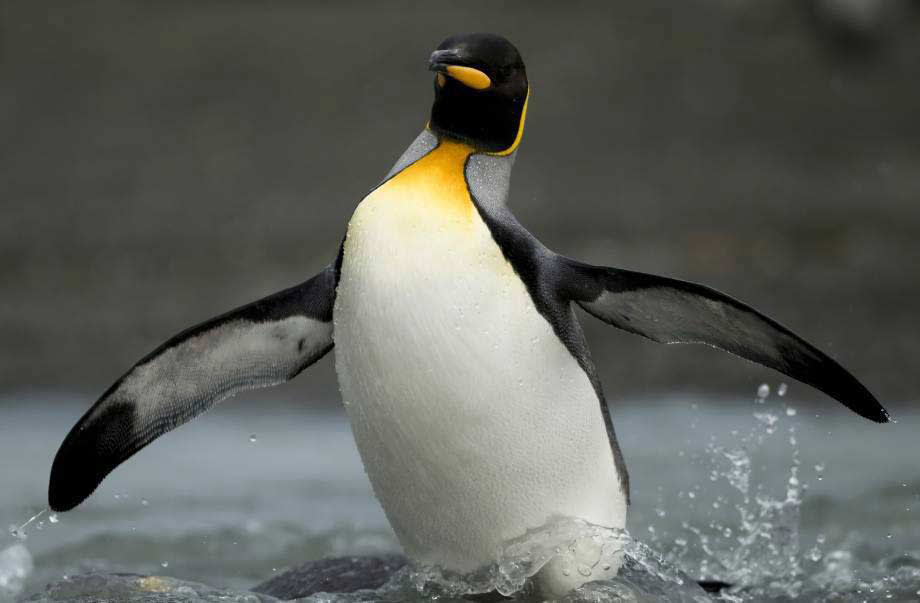 King Penguin
King Penguin No feature about penguins would be complete without showcasing Antarctica. In this glistening frozen wilderness devoid of human presence – save a couple of hundred hardy scientists – six of the world’s penguin species can be found. Out on the peninsula, Adelie, Chinstrap, Gentoo and Macaroni penguins can be found clambering clumsily around rock-strewn beaches, while in the deep-freeze of the interior, Emperors huddle and shuffle to protect their precious cargo from the harsh elements.
For an altogether royal encounter, head to South Georgia and sit amongst millions of Kings – it’s quite an assault on the senses though – you’ve been warned!
Take me there: Holidays to Antarctica
What is Exodus doing to help penguin populations?
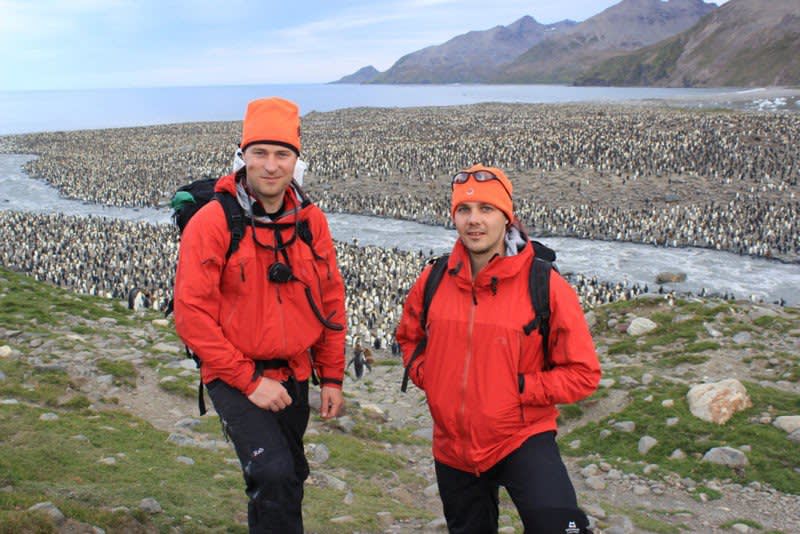 Penguinologist Tom Hart
Penguinologist Tom Hart As part of our commitment to conservation and responsible travel, we teamed up with Penguin Lifelines, a conservation project set up by the Zoological Society of London and Oxford University to understand the impact of climate change and fisheries on Antarctic penguins and to design a protected area network.
Penguinologist Tom Hart (yes, that is his official job title!) travelled on a number of our trips to Antarctica, picking up feathers and setting up time-lapse cameras in order to research threats to penguins and to identify protected areas for them.
Browse our trips below and discover the best places to find penguins.
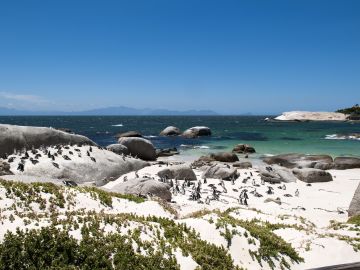
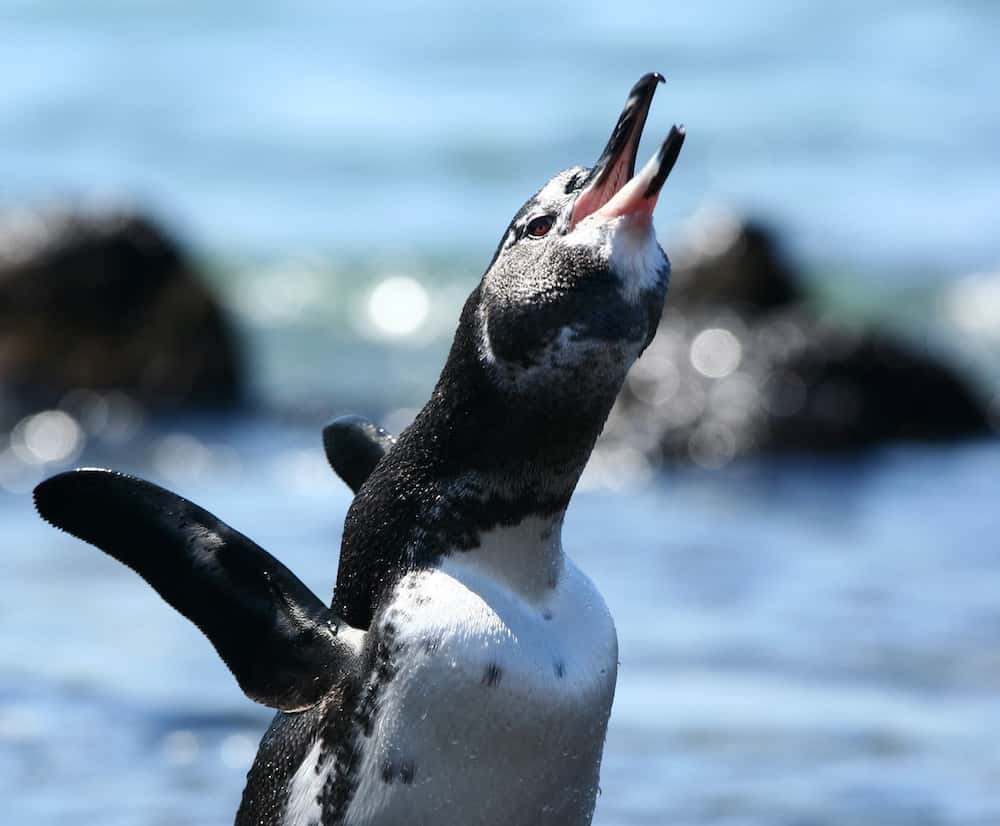 Galapagos penguin
Galapagos penguin